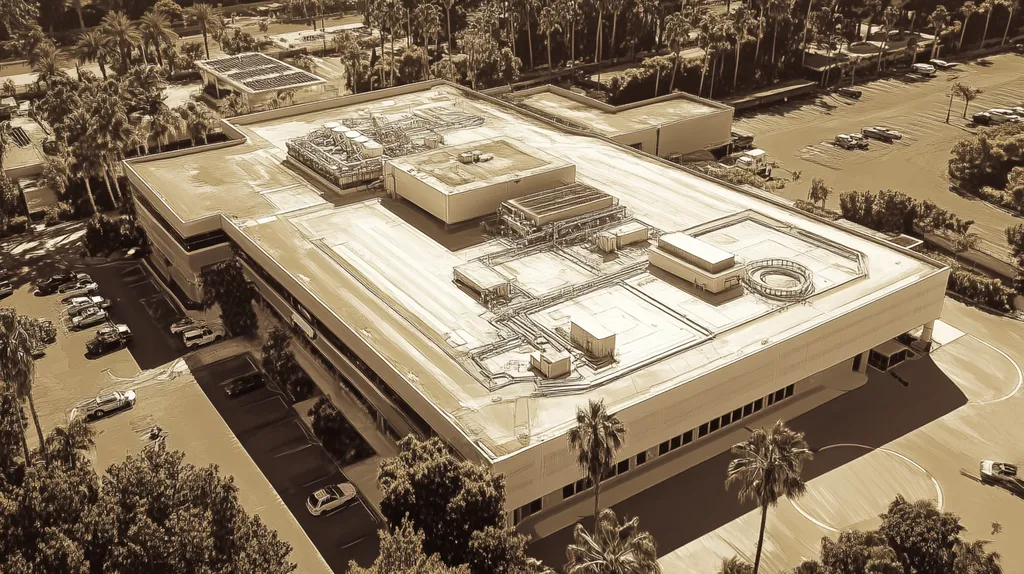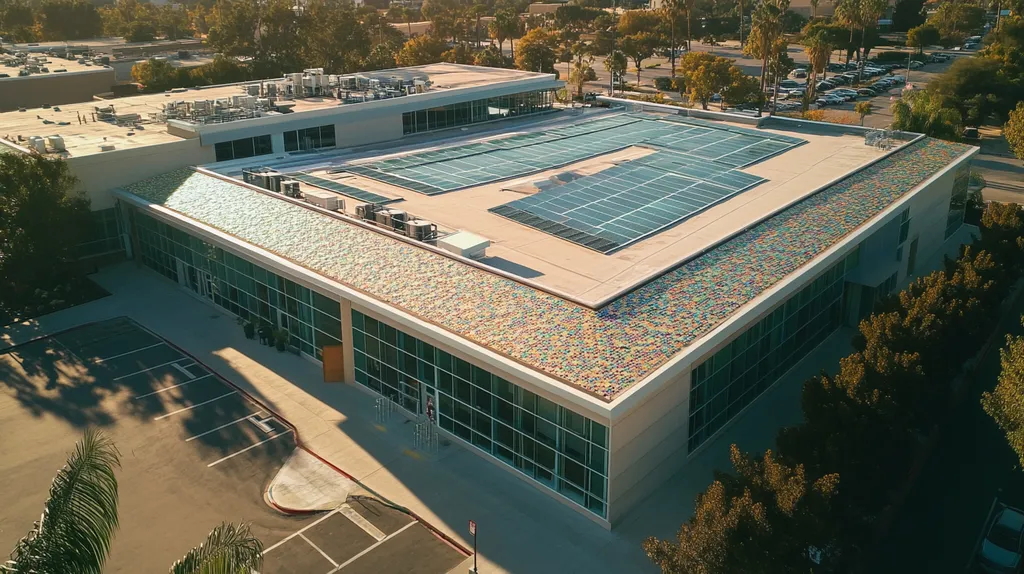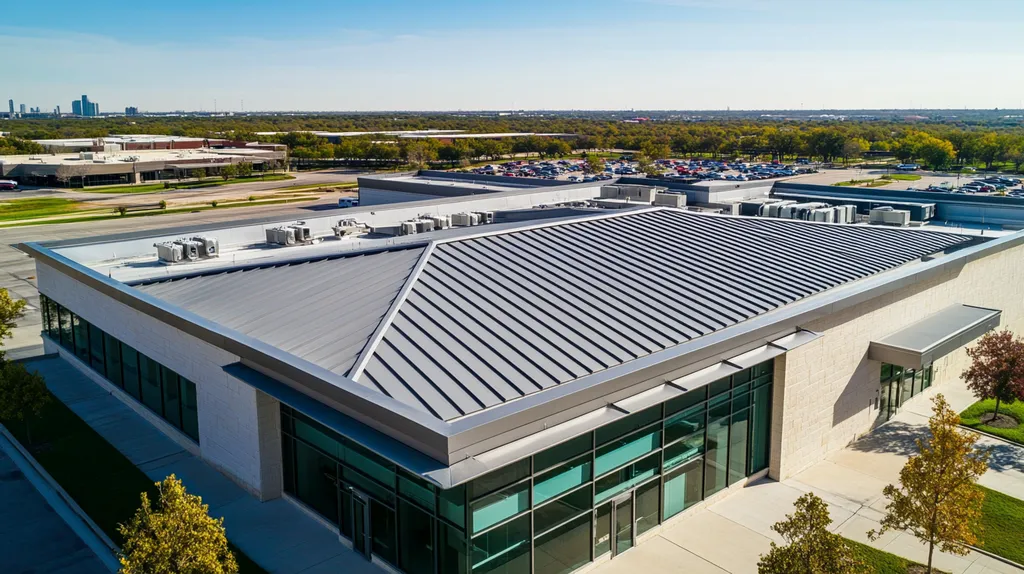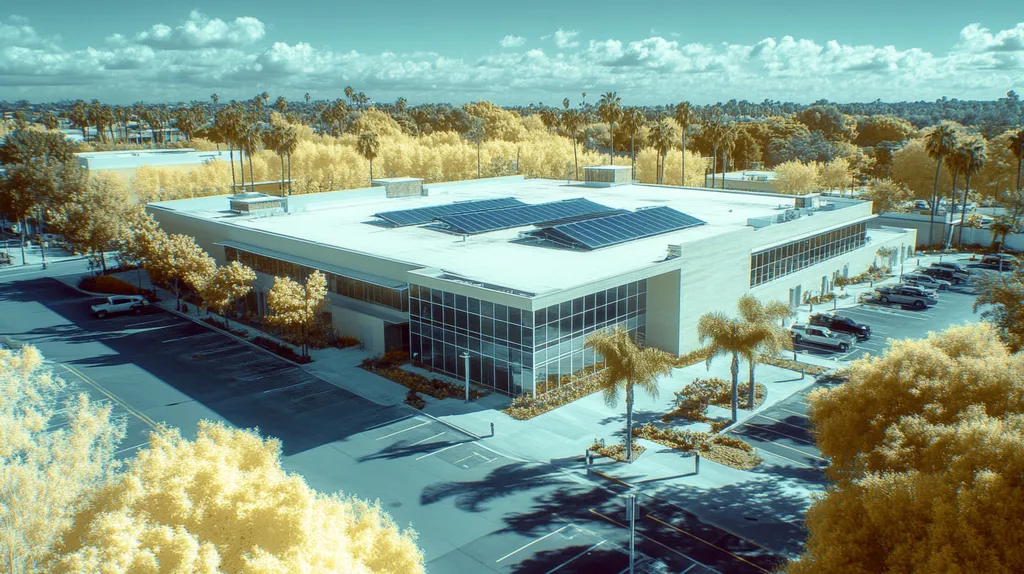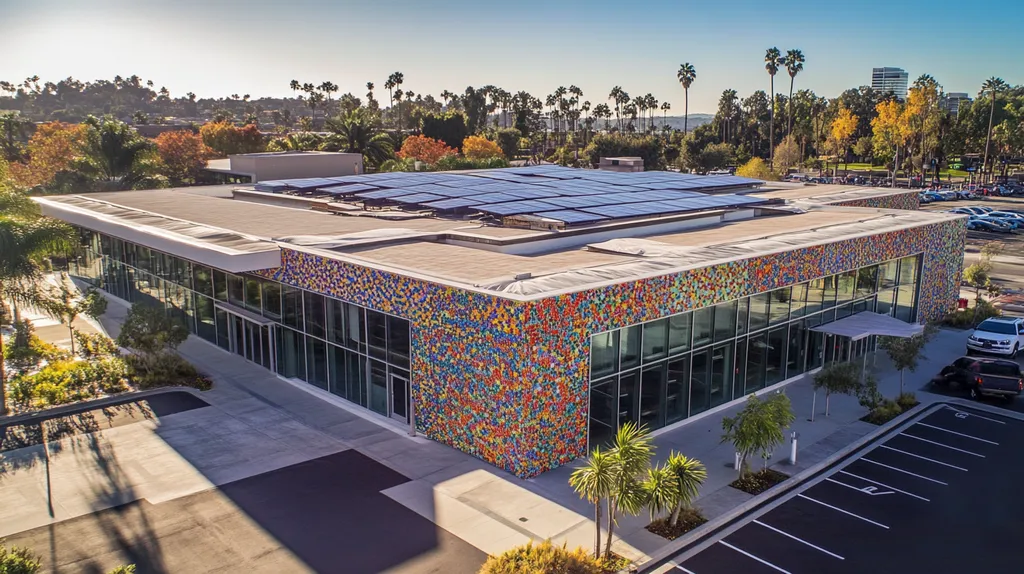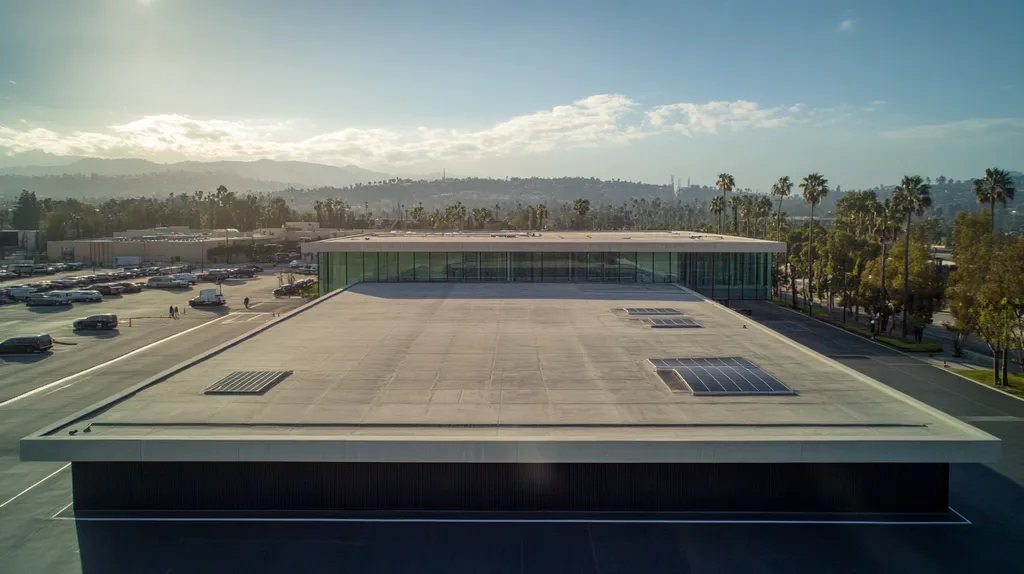Commercial roofs face an unprecedented array of challenges as climate patterns become increasingly extreme and unpredictable. Industry data shows that 90% of premature roof failures stem from climate-related issues that could have been prevented through proper system selection and maintenance.
From scorching desert heat to coastal hurricanes and heavy northern snow loads, each climate zone creates unique demands on roofing materials and installation methods. Understanding these climate-specific challenges is crucial for protecting valuable commercial assets and preventing catastrophic failures.
This comprehensive guide examines the fundamental concepts, critical components, and proven strategies for optimizing commercial roof performance across diverse climate conditions.
SECTION 1: FUNDAMENTAL CONCEPTS
Commercial roofing systems face unprecedented challenges as climate patterns become more extreme and unpredictable. Every year, building owners lose millions in preventable damage due to inadequate understanding of how climate affects roofing performance. The interaction between weather patterns, building materials, and structural design creates complex challenges that demand careful consideration of three fundamental concepts: thermal cycling, climate-specific challenges, and moisture control.
Thermal Cycling and Its Effects on Roof Materials
Thermal cycling represents one of the most destructive forces affecting commercial roofs. As temperatures fluctuate between day and night or season to season, roofing materials repeatedly expand and contract, creating stress on seams, flashings, and membrane surfaces.
Different roofing materials respond uniquely to thermal stress. Metal roofs show visible rippling and fastener loosening, while single-ply membranes may develop tears at attachment points or show membrane shrinkage over time.
The severity of thermal cycling damage depends heavily on local climate conditions. Desert regions, with extreme temperature swings, often see accelerated deterioration compared to more temperate zones.
Preventive measures like proper expansion joints and flexible membrane selection can significantly reduce thermal cycling impacts. Regular inspections focusing on common failure points help identify early warning signs before major damage occurs.
Climate-Specific Weather Challenges Affecting Roof Longevity
Cold temperatures, heavy snowfall, and freeze-thaw cycles create unique challenges for commercial roofs in northern regions. Even a single inch of wet snow adds 1.66 pounds per square foot, potentially leading to structural overload and collapse. (source: CentiMark)
Coastal areas face different but equally challenging conditions. Salt-laden air accelerates metal corrosion, while hurricane-force winds test membrane attachment systems and edge details.
Desert environments present their own set of challenges. Intense UV exposure degrades roofing materials rapidly, while sudden temperature drops can cause condensation issues inside building envelopes.
Each climate zone requires specific design considerations and material selections. Understanding these requirements helps ensure appropriate system selection and maintenance planning.
Fundamentals of Roof Envelope and Moisture Control
The roof envelope serves as a building’s primary defense against moisture intrusion. Proper design must account for both external precipitation and internal vapor drive, which vary significantly by climate zone.
Effective moisture control starts with appropriate material layering. Vapor barriers, insulation, and waterproof membranes must work together to prevent condensation and water infiltration.
Ventilation plays a crucial role in moisture management. Properly designed ventilation systems help regulate temperature and humidity levels within the roof assembly, preventing moisture accumulation.
Regular monitoring of moisture levels and inspection of potential entry points helps prevent serious damage. Early detection of moisture issues can prevent costly repairs and extend roof system longevity.
SECTION 2: SYSTEM COMPONENTS
Commercial roofing systems require precise component selection to withstand increasingly extreme weather patterns. Every year, property owners face premature roof failures due to mismatched components that cannot handle local climate conditions. Understanding the critical relationship between membranes, insulation, and drainage systems is essential for maximizing roof performance and protecting valuable assets.
Selection of Roofing Membranes for Different Climates
Membrane selection represents the first line of defense against weather-related damage. The wrong choice can lead to rapid deterioration, especially in regions with extreme temperature fluctuations or severe weather events.
Single-ply membranes like TPO and EPDM offer excellent durability in moderate climates. These materials provide superior UV resistance and maintain flexibility across a wide temperature range.
Modified bitumen systems excel in areas with frequent precipitation or extreme temperature swings. Their multi-layer construction provides redundant protection against water infiltration and better handles thermal stress.
Climate-specific considerations should drive membrane selection. Hot climates demand reflective surfaces to reduce cooling costs, while cold regions require materials that resist ice damage and maintain flexibility at low temperatures.
Insulation Types and Their Role in Thermal Performance
In northern regions, proper insulation becomes critical for preventing ice dams and structural overload. Heavy snowfall and freeze-thaw cycles demand robust insulation systems capable of maintaining consistent roof temperatures.
Polyisocyanurate insulation boards provide excellent R-value per inch, making them ideal for buildings with limited roof depth. Their closed-cell structure resists moisture absorption, maintaining thermal performance over time.
Expanded polystyrene (EPS) offers a cost-effective solution for moderate climates. Its stable R-value and moisture resistance make it particularly suitable for buildings with high interior humidity levels.
In northern North America, heavy snowfall and freeze-thaw cycles require carefully engineered insulation systems to prevent sagging or collapse. Even a single inch of wet snow adds 1.66 pounds per square foot of load to the roof structure. (source: CentiMark)
Drainage Systems and Ponding Water Prevention
Effective drainage systems prevent water accumulation that can compromise roof integrity. Poor drainage leads to ponding, which accelerates membrane aging and increases the risk of leaks.
Primary drainage components include interior drains, scuppers, and properly designed slope. These elements work together to channel water off the roof surface quickly and efficiently.
Secondary drainage systems provide crucial backup protection during heavy rainfall. Emergency overflow scuppers and additional drain lines help prevent catastrophic failures during extreme weather events.
Regular maintenance of drainage systems is essential for preventing blockages. Accumulated debris can quickly overwhelm even well-designed systems, leading to water backup and potential structural damage.
SECTION 3: IMPLEMENTATION METHODS
Proper implementation of roofing systems can mean the difference between a roof that lasts decades and one that fails prematurely during extreme weather. Every year, commercial buildings face millions in damage from improperly installed roofing systems that cannot withstand local climate conditions. Critical factors like fastening methods, weather-resistant assemblies, and protective coatings must be precisely implemented to ensure long-term performance and protect valuable business assets.
Installation Techniques for Weather-Resistant Roof Assemblies
Strong winds and severe weather can quickly compromise roofing components that aren’t properly installed. Impact-resistant materials and secure edge details are essential for maintaining roof integrity during major storms.
Proper sequencing of installation layers creates redundant protection against water infiltration. This includes careful attention to overlap requirements and seam placement to prevent water from backing up under materials.
Temperature conditions during installation significantly impact material performance. Adhesives and sealants require specific temperature ranges to cure properly and achieve maximum bonding strength.
Strategic placement of expansion joints helps accommodate thermal movement without stressing seams or flashings. These joints must be properly sized and located based on roof geometry and local climate conditions.
Methods for Ensuring Secure Fastening in High-Wind Areas
Enhanced fastening patterns in perimeter and corner zones provide critical resistance against wind uplift forces. These areas experience the highest wind pressures and require additional mechanical attachment.
Selection of appropriate fastener types and lengths ensures proper deck engagement. Fasteners must penetrate structural components adequately while avoiding potential corrosion issues.
Wind resistance heavily depends on maintaining consistent fastener spacing and proper installation depth. Over-driven or under-driven fasteners significantly reduce holding power and system performance.
Regular inspection of fastening systems helps identify loose or damaged components before they compromise larger sections. This includes checking for backing out, rust, or signs of movement.
Integration of Reflective and UV-Resistant Coatings
Strong winds and severe weather can quickly compromise roofing components that aren’t properly protected. Reflective coatings and impact-resistant materials significantly reduce damage during major storms and help maintain stable indoor temperatures. (source: Blue Frog Roofing)
Surface preparation significantly impacts coating adhesion and longevity. All surfaces must be clean, dry, and properly primed before coating application.
Application thickness must meet manufacturer specifications to achieve rated performance. Too thin or uneven application reduces UV protection and reflective properties.
Coating reapplication schedules vary based on exposure conditions and wear patterns. High-traffic areas or zones with intense UV exposure may require more frequent maintenance.
SECTION 4: MAINTENANCE REQUIREMENTS
Proactive maintenance represents the cornerstone of commercial roof longevity, yet statistics show that 90% of premature roof failures stem from inadequate maintenance protocols. As climate patterns become more extreme, the stakes for proper maintenance grow higher. Property owners face increasing pressure to implement comprehensive maintenance strategies that address thermal stress, biological growth, and climate-specific challenges before they escalate into costly repairs.
Routine Inspection Protocols for Diverse Climate Challenges
In northern regions, cold temperatures, heavy snowfall, and freeze-thaw cycles create unique inspection requirements for commercial roofs. These conditions demand specialized attention to prevent ice dams and structural damage from snow accumulation. (source: CentiMark)
Coastal environments require focused inspections on corrosion points and membrane attachment systems. Salt exposure and high winds create specific vulnerabilities that must be monitored regularly.
Desert climates demand careful evaluation of UV damage and thermal expansion effects. Regular assessment of coating integrity and seam stability helps prevent sudden failures.
Documentation through detailed inspection reports creates valuable historical data. This information guides future maintenance decisions and helps predict potential failure points.
Addressing Thermal Shock and Material Fatigue Through Maintenance
Thermal shock represents one of the most destructive forces affecting commercial roofs. Daily temperature swings create constant expansion and contraction that stresses materials and connections.
Regular evaluation of expansion joints and flexible connections ensures proper movement accommodation. These components require particular attention during seasonal transitions.
Material fatigue often manifests first at membrane seams and flashings. Early detection through systematic inspection prevents minor issues from developing into major failures.
Implementing preventive measures like reflective coatings can significantly reduce thermal stress. These treatments require periodic renewal based on exposure conditions and wear patterns.
Preventative Measures Against Moss, Algae, and Biological Growth
Biological growth threatens roof integrity by trapping moisture and accelerating material degradation. Regular cleaning and proper drainage maintenance prevent conditions that support unwanted growth.
Areas with high humidity require more frequent inspections for biological contamination. Early intervention prevents extensive cleaning requirements and potential membrane damage.
Application of biocide treatments provides an additional defense against organic growth. Treatment schedules should align with local climate conditions and growth patterns.
Proper ventilation plays a crucial role in preventing moisture accumulation that supports biological growth. Regular assessment of ventilation systems ensures optimal performance.
SECTION 5: PERFORMANCE METRICS
Performance metrics serve as critical indicators of commercial roof health and longevity. Each year, inadequate monitoring of key performance indicators leads to billions in preventable damage across North America’s commercial building stock. Without proper measurement and tracking of durability, thermal efficiency, and environmental resistance, property owners face elevated risks of catastrophic failures and skyrocketing operational costs.
Evaluating Roof System Durability and Material Degradation
Material degradation tracking provides essential data about roof system performance. Regular assessment of membrane thickness, seam integrity, and surface wear patterns helps predict potential failure points before they develop into costly repairs.
Climate-specific degradation patterns require specialized monitoring approaches. Desert environments demand particular attention to UV damage and thermal stress, while coastal regions must focus on salt-air corrosion and wind-related wear.
Digital imaging and drone technology now enable precise tracking of degradation patterns. These tools create detailed surface maps that highlight areas of concern and document changes over time.
Laboratory analysis of material samples provides crucial data about remaining service life. Understanding degradation rates helps facility managers optimize maintenance schedules and plan for eventual replacement.
Assessing Thermal Efficiency and Energy Impact
Thermal efficiency directly impacts building operating costs through its effect on HVAC loads. Poor thermal performance can increase cooling costs by up to 25% in warm climates and heating costs by similar margins in cold regions.
Infrared scanning technology enables precise mapping of thermal losses. These assessments identify areas of insulation compromise and thermal bridging that reduce overall system efficiency.
Reflective surface degradation monitoring helps maintain optimal thermal performance. Regular measurement of solar reflectance values ensures continued energy savings in hot climates.
Integration of smart sensors provides real-time thermal performance data. This information helps facility managers optimize HVAC operations and identify emerging efficiency issues.
Measuring Resistance to Water Infiltration and Wind Uplift
Commercial buildings face constant exposure to extreme weather conditions that test water and wind resistance. Heavy rain can cause pooling and leaks, while strong winds threaten to dislodge roofing components and compromise structural integrity. (source: Blue Frog Roofing)
Electronic leak detection systems provide early warning of water infiltration. These systems can locate breaches in the roofing membrane before visible damage occurs inside the building.
Wind uplift resistance requires regular assessment of membrane attachment points. Systematic testing of seams and edge details helps ensure continued performance during severe weather events.
Performance data tracking creates valuable historical records for future planning. This information guides maintenance decisions and helps optimize system upgrades when needed.
SECTION 6: OPTIMIZATION STRATEGIES
Commercial roofing optimization has become increasingly critical as weather patterns grow more extreme. Industry data shows that poorly optimized roofs can reduce expected lifespans by 40-60% and dramatically increase energy costs. Strategic material selection, protective treatments, and innovative design elements are no longer optional – they represent essential investments for protecting valuable commercial assets and ensuring business continuity.
Climate-Driven Material Selection and Roof Design Optimization
Cold temperatures, heavy snowfall, and freeze-thaw cycles create extreme demands on commercial roofs in northern regions. Even a single inch of wet snow adds 1.66 pounds per square foot of load, making proper material selection and structural design critical for preventing collapse. (source: CentiMark)
Coastal environments demand materials resistant to salt corrosion and high winds. Modified bitumen and properly reinforced single-ply systems provide the durability needed for these challenging conditions.
Desert regions require reflective surfaces and materials that maintain stability under intense UV exposure. Light-colored membranes and specialized coatings help reduce thermal stress while lowering cooling costs.
Strategic placement of expansion joints and proper slope design ensures effective water management. These elements must be carefully engineered based on local precipitation patterns and drainage requirements.
Enhancing Roof Longevity with Protective Coatings and Sealants
Protective coatings serve as a critical defense against environmental degradation. Modern coating systems can extend roof life by 10-15 years when properly maintained and reapplied.
Surface preparation significantly impacts coating performance and longevity. Thorough cleaning and proper primer application ensure maximum adhesion and protection.
Regular reapplication schedules must account for local weather patterns and exposure levels. High-UV areas typically require more frequent renewal to maintain protective properties.
Specialized sealants at transitions and penetrations prevent water infiltration at vulnerable points. These areas demand regular inspection and maintenance to ensure continued effectiveness.
Incorporating Green Roof Elements in Moisture-Intensive Environments
Green roof systems offer natural protection against moisture damage while providing additional benefits. Vegetation layers help regulate temperature fluctuations and reduce stormwater runoff by up to 65%.
Proper plant selection must align with local climate conditions and maintenance capabilities. Drought-resistant species work well in arid regions, while moisture-tolerant varieties suit rainy climates.
Drainage layers beneath vegetation prevent water accumulation that could compromise roof integrity. These systems require careful engineering to handle maximum expected rainfall volumes.
Integration of monitoring systems helps track moisture levels and system performance. Regular data collection enables proactive maintenance and early problem detection.
Looking Ahead
With commercial roof failures costing businesses over $2.5 billion annually in repairs and lost revenue, understanding climate-specific roofing challenges has never been more critical.
Modern commercial roofs must withstand unprecedented weather extremes, from record-breaking heat waves to increasingly powerful storms and destructive freeze-thaw cycles.
Success requires an integrated approach combining proper material selection, precise installation methods, and proactive maintenance protocols tailored to local climate conditions.
Property owners and facility managers who implement comprehensive, climate-aware roofing strategies can expect to double their roof’s service life while significantly reducing energy costs and emergency repairs.
The future of commercial roofing lies in climate-specific optimization – those who adapt will protect their assets, while those who don’t risk catastrophic failures.
FREQUENTLY ASKED QUESTIONS
Q. How does climate affect my commercial roof performance?
A. Climate significantly impacts commercial roof performance through thermal cycling, moisture, and material selection. For example, roofs in desert climates endure more thermal stress, while coastal roofs face corrosion challenges. Understanding these factors helps extend roof life by selecting appropriate materials and designs specific to your climate.
Q. What commercial roof components should I consider for my location?
A. Selecting the right components like membranes, insulation, and drainage is crucial for roof performance. For example, in areas with heavy rain, modified bitumen is ideal due to its water resistance. In contrast, single-ply membranes work well in moderate climates, making location-based choices vital.
Q. What are the best installation methods for commercial roofs?
A. Proper installation requires secure fastening, weather-resistant assemblies, and strategic expansion joints. Install materials based on temperature conditions and follow manufacturer recommendations for overlaps and seams to prevent future water infiltration. Ensuring the right techniques can enhance roof longevity against extreme weather events.
Q. How often should I inspect my commercial roof?
A. Regular inspections are essential; aim for at least biannual checks, and more frequently in severe climates. Address any visible damage, debris accumulation, or drainage issues promptly to extend roof life. Create detailed reports to track changes and inform future maintenance strategies.
Q. How do I reduce thermal shock on my commercial roof?
A. To minimize thermal shock, ensure proper insulation, and regularly inspect expansion joints. Using reflective coatings can help manage temperature differentials. Conduct evaluations during seasonal transitions to avoid material fatigue, which often occurs at seams and flashings due to constant temperature fluctuations.
Q. What performance metrics should I track for my commercial roof?
A. Key performance metrics include durability trends, thermal efficiency, and water infiltration resistance. Regular assessment can help predict potential failures and optimize maintenance schedules. Utilize technologies like infrared scanning and electronic leak detection to monitor and maintain your roof’s performance effectively.
Q. How can I optimize my commercial roof for energy efficiency?
A. Optimizing roofs involves selecting energy-efficient materials, applying reflective coatings, and considering green roof designs. Regular maintenance and inspections are vital. These strategies can significantly reduce energy costs and extend the lifespan of your roofing system in different climates.

